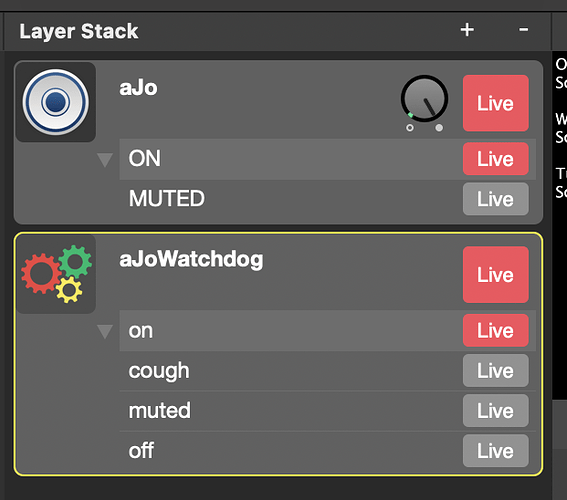Hello my friends,
sometimes we have to cough. And sometimes we forget to turn on the audio again. A show like an aquarium isn’t fun. At least not for us, who spent hours and hours into a production. So, here it is: A WATCHDOG:
Then, at the control surface, I use the scripts instead of the audio-layer-variants:
Content of the scripts:
1. on
2. muted
3. off
These 3 script variants are set to “manual” and these two automation commands are used:
=> layerOn(API-Endpoint) (for 1 and 2) and
=> layerOff(API-Endpoint) (for 3)
Simply use the API-Endpoints for turning on/off the layer variants.
4. cough
This variant is special. The same as with “mute”, first I activate the muted layer variant of the audio layer. Afterwards the script waits a bit. And finally, the script switches back to the layer-variant “on” inside the script layer.
// start mute
layerOn(Audio-Layer-Variant-Mute-API-Endpoint)
// wait a bit
sleep(3)
// turn aufio on again
layerOn(Automation-Layer-Variant-on)
You can use this watchdog to control lots in mimoLive. I think it’s one of the basic techniques you should know. At the control surface, you can provide a cough-button and the host does not have to turn audio on again. Make sure, that the host is not able to turn the automation buttons “off”, so never use “toggle”. 
Enhancements:
Switch the video to a fallback (simultaneously, by using LayerSets)
What do you think about this technique? How could you make use of it? Are there any questions? Let me know it in the comments!
Download Demo:
https://drive.google.com/file/d/1kMnggvxb0PhCIMkJEbdc0k-aEcGMn35C/view?usp=sharing
Happy Day,
Johannes


